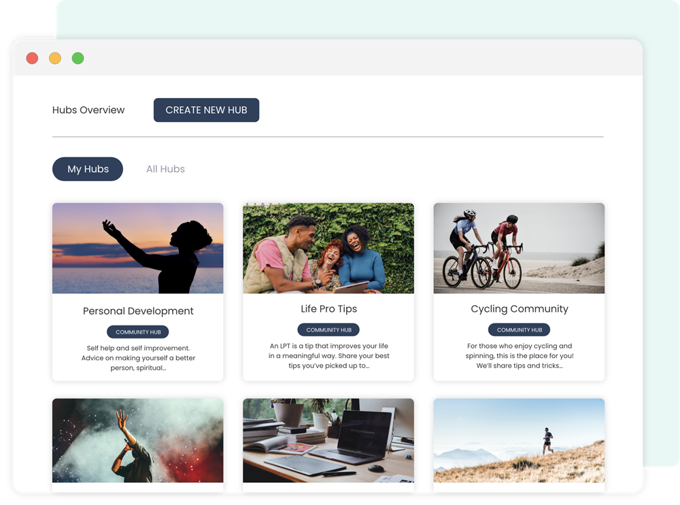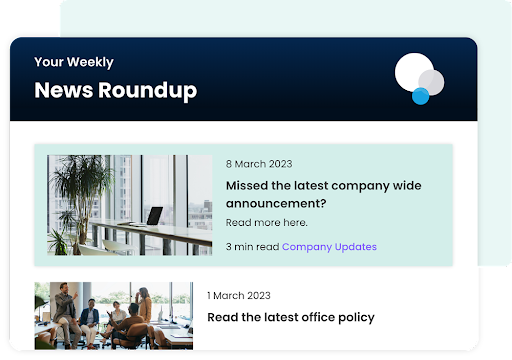Oak Engage’s recent Change report found that 43% of employees believe their employer is not prepared to effectively manage workplace change. Awareness of the causes of successful and unsuccessful change is essential, so keeping tabs on the latest research is important if your organisation is in the planning, delivery stage or even just starting to think about implementing a new system etc.
Change is something that the vast majority of us have experienced at work to varying degrees, such as implementing new technology, personnel restructuring and even the introduction of working from home. We will also have encountered varying levels of change resistance or have felt uncomfortable at the prospect ourselves. Implementing change is a skill in of itself and one that requires dedication and a lot of patience.
As vital as change is to evolution and growth in every industry, it's no secret that the majority of these projects crash and burn. 70% to be exact.
That being said, here are 10 workplace change statistics you need to know before embarking on any change.
10 workplace change statistics you need to know
46% of CIOs report culture being the biggest barrier to success (Gartner)
Gartner’s Change Management study reports that CIOs see culture as the main barrier to successful change. The same report found 42% of CEOs leading digital transformations expect deep cultural changes to facilitate success.
An unsuccessful change will often be the product of resistance in the workplace, which usually comes down to the business culture. If there is a lack of trust in leadership and misalignment between teams and organisational goals, an organisation will be unable to deliver change successfully.
Consistent communication and social spaces are two things you have to provide to employees to build a culture. You can align messaging and brand vision through consistency, from colours and logos to the tone of voice you adopt in comms. Via social spaces like Oak’s hubs and pages, employees can create virtual communities to develop a positive culture wherever they are.

31% of CEOs are fired for not managing organisational change well enough (Forbes)
Employees aren't the only ones with a lot riding on changes. CEOs are often in the firing line if all doesn’t go to plan. Leaders are often responsible for the bottom line, so it’s no surprise that so many dismissals stem from transformation failures and the costs they incur.
When change is not planned sufficiently, it becomes a firefighting exercise for leaders and line managers. This will usually come back to bite the person in charge. Strategic planning from the top for every impacted workstream prior to any change project is essential.
Recommended reading 📖: CEO pain points and how to overcome them
18% of employees would consider leaving their job if a big organisation change occurred (Oak change report)
Change is such a daunting prospect that almost a fifth of employees would consider leaving their job as a natural reaction to it. Quite literally, many would resist change as if their livelihood depended on it.
Becky Turner, Workplace Psychologist at Claremont, said in Oak’s Change Report: “Even if what has gone before has been awful, you’ve created that connection and community in that space. There will always be people who initially don’t like the change and being taken outside of their comfort zone.”
The connection we have to what we know means that early engagement is key to getting people onside with change. Our minds are programmed to be fearful of the unknown, so demonstrate how the change will benefit individuals and the organisation to get employee buy-in.
Frontline employees taking the initiative to drive change elevates the success of transformations to a whopping 71%. (McKinsey)
People are, or should be, central to change. Those who are the face of the business and at the coalface of operations are the most important consideration. Mckinsey reports that frontline employees can elevate the success of change programmes to 71%!
If people on the frontline are unaware of new processes or responsibilities, the change is doomed to fail. Successful change will be driven by the well-oiled machine of an engaged, informed workforce. Make sure employees have all the information and training they need prior to any go-live date.
In Oak’s Change Report, Change Management Expert, Hilary Scarlett, spoke about how we will fill in the gaps ourselves when not equipped properly. She said: “We can waste lots of time and energy trying to fill that information gap – just when we need to spend our energy on learning and adapting.”
73% of employees affected by change say they’re suffering from moderate to high-stress levels. (Gartner)
Gartner’s Change Management Communication study reports high levels of stress during change programmes. This is largely down to the ‘fear of the unknown’ that we are predisposed to feel.
In Oak’s Change Report, communications expert Jenni Field, states: “Our brains are designed to keep us safe. If we don’t know what is going to happen, we are going to worry and feel a bit anxious.”
Clear communication is needed so that everyone is aware of how their role is changing, new processes and procedures etc. Anxiety will decrease as employees feel like they have more control over the situation.
The biggest reason for change resistance is a lack of trust in leadership (41%) (Oak change report)
It’s no wonder that CEOs lose their jobs during change so often when the biggest reason for change resistance is a lack of trust in the organisation and its leadership.
Leaders need to work harder to build trust by creating a culture of transparency, but also to work more with internal comms to ensure what they say is perceived in the right way by employees.
“As communicators, make sure that the leadership team is doing things the right way. Now this will depend on your culture. There may be examples where leaders have the best intentions but their behaviours don’t demonstrate that.”
Cultures of trust are built over time and cannot just be an afterthought when embarking on change.
Post regular comms to employees with leadership at the forefront to make leadership more relatable and trustworthy. Utilise your company intranet to the same effect as Five Guys, where leaders regularly post content to their intuitive social feed.
70% of employees choose their supervisors as their preferred senders of personal messages during change (Prosci)
When it comes to receiving messages during change, 70% of employees prefer to hear from immediate supervisors. This can be linked to a lack of trust in leadership mentioned previously, the deeper level of influence and relatability they have or their better knowledge of operations.
This is why it is so important to have change champions across the various departments. The importance of brand advocates cannot be underestimated, with internal brand messages shared 24 times more when they’re advocated by employees.
It starts with assessing those employees who are most open to change, have influence in the workforce and are advocates of the business. They should play a key role from the start of any change.
A transformation is 5.8 times more likely to be successful at organisations where CEOs communicate a compelling, high-level change story (McKinsey)
You can’t just rely on brand advocates to communicate during transformation and leadership can be an important vehicle in internal comms. In the same principle as reading a book, the most compelling communications are the narratives that resonate with us. According to McKinsey, this can optimise the success of organisational change.
This is why internal storytelling plays such an important role in change communication. Transformation is one of the easiest narratives to frame employees within. The role of the CEO is to be at the front of these communications to align this to the overarching aims of the organisation.

With Oak’s Curated Content Systems, messages will be sent based on your outcomes, so you can focus on crafting a compelling narrative and less on the delivery.
75% of transformation efforts don’t deliver the hoped-for results (BCG, 2020).
Three-quarters of change programmes don’t deliver on their objectives. There are so many deep-rooted issues and fundamentals that businesses get wrong. Usually, this isn’t because of the technology or processes themselves, it is not equipping people suitably for them.
Targeted communication with employees is absolutely vital to achieving change objectives. If people receive endless amounts of irrelevant ‘send all’ messages, the desired takeaway is often lost . Oak’s AI-driven solution means employees will only see desired and must-see information, improving actionability on change related content.
74% believe that leaders need to do more to understand why people are change resistant (Oak change report)
Three-quarters of employees believe that leaders need to do more to understand why people are change resistant, which could be linked to why so many change programmes fail.
In larger organisations, it is difficult for CEOs and leaders to connect to people on an individual level. This is where clear reporting on employee feedback can give insights into various departments in a holistic way that can be actioned upon.
Oak’s pulse surveys give you the ability to target surveys to specific people and receive data in real time. Leaders can learn more about attitudes towards change in their workforce regardless of its size and build a strategy around it.
Read our blog on the causes of change resistance in the workplace.


